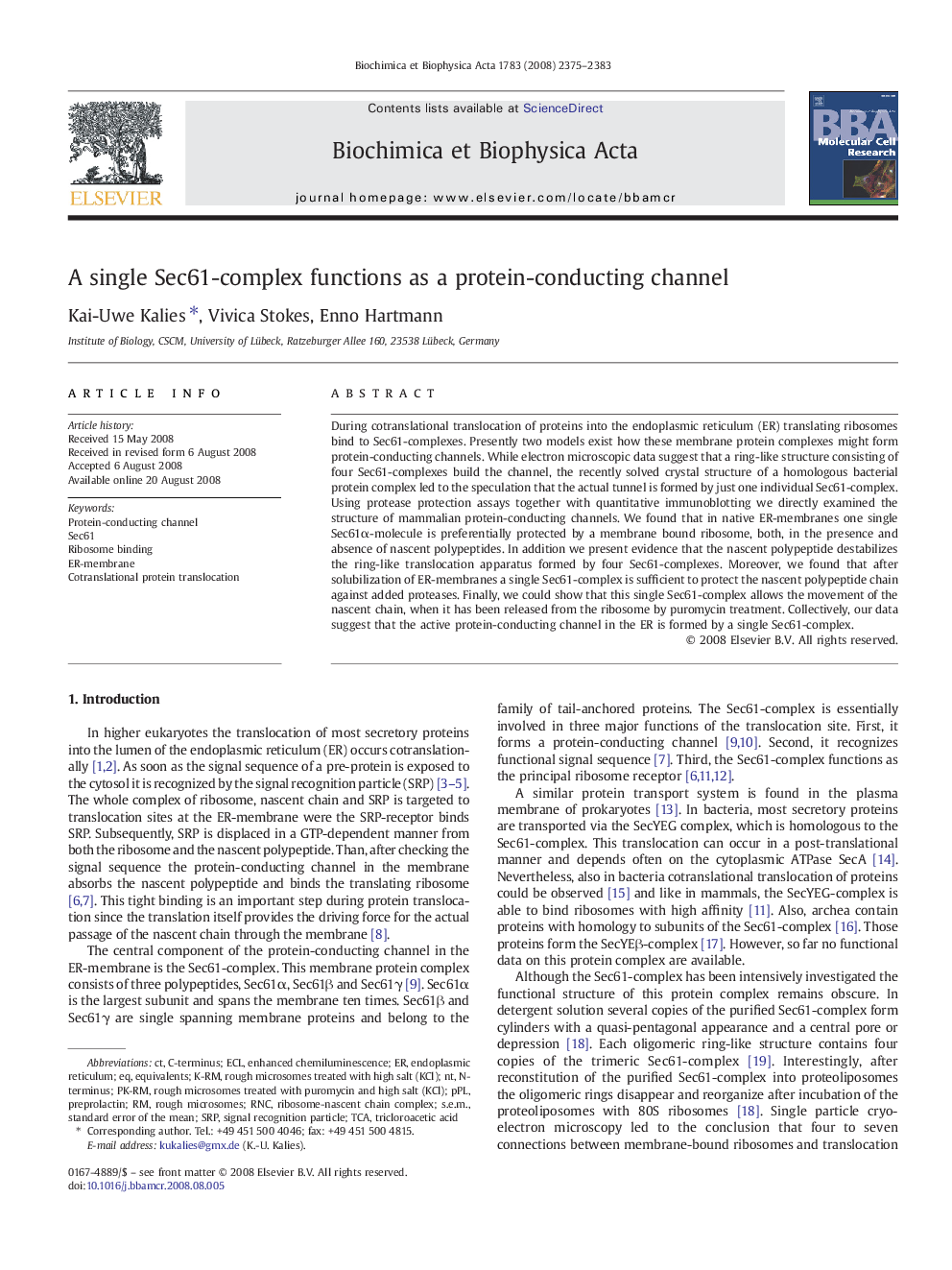| Article ID | Journal | Published Year | Pages | File Type |
|---|---|---|---|---|
| 1951072 | Biochimica et Biophysica Acta (BBA) - Molecular Cell Research | 2008 | 9 Pages |
During cotranslational translocation of proteins into the endoplasmic reticulum (ER) translating ribosomes bind to Sec61-complexes. Presently two models exist how these membrane protein complexes might form protein-conducting channels. While electron microscopic data suggest that a ring-like structure consisting of four Sec61-complexes build the channel, the recently solved crystal structure of a homologous bacterial protein complex led to the speculation that the actual tunnel is formed by just one individual Sec61-complex. Using protease protection assays together with quantitative immunoblotting we directly examined the structure of mammalian protein-conducting channels. We found that in native ER-membranes one single Sec61α-molecule is preferentially protected by a membrane bound ribosome, both, in the presence and absence of nascent polypeptides. In addition we present evidence that the nascent polypeptide destabilizes the ring-like translocation apparatus formed by four Sec61-complexes. Moreover, we found that after solubilization of ER-membranes a single Sec61-complex is sufficient to protect the nascent polypeptide chain against added proteases. Finally, we could show that this single Sec61-complex allows the movement of the nascent chain, when it has been released from the ribosome by puromycin treatment. Collectively, our data suggest that the active protein-conducting channel in the ER is formed by a single Sec61-complex.
